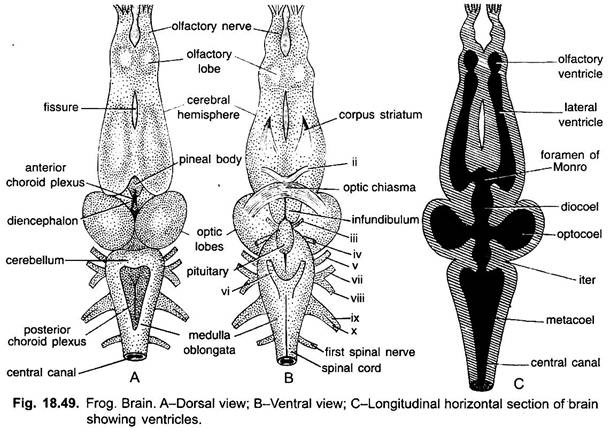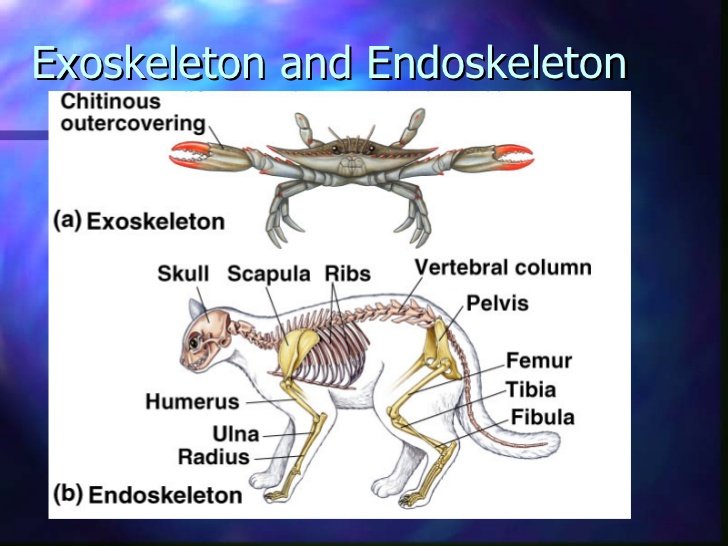Amphibians- Structure and Function Study Guide
Introduction:
- An amphibian’s digestive, excretory, and reproductive systems are all the same.
- The cloaca is a body cavity shared by all three systems.
- Wastes from the digestive and excretory systems enter the cloaca, whereas gametes enter the reproductive system.
- An opening in the cloaca permits wastes and gametes to exit the body.
- Amphibians have a three-chambered heart and a relatively sophisticated circulatory system.
Sensory organs
- Their neurological system is also rather complicated, allowing them to interact with one another and with their surroundings.
- Amphibians have sensory organs that allow them to smell and taste substances.
- Frogs have the finest vision and hearing of any creature.
- To create noises, frogs have a larynx which is also known as a voice box.
Amphibians Anatomy
- Amphibians have a skeletal structure that is structurally similar to other tetrapods but with a few differences.
- Except for legless caecilians and a few salamander species with reduced or no limbs, they all have four limbs.
- The bones are light and hollow.
- Although none has claws, most amphibians have four fingers on the forefoot and five on the hindfoot.
- Sirens are aquatic salamanders that have stumpy forelimbs and no hind limbs.
- The caecilians have no limbs.
- They dig like earthworms, with muscular contraction zones traveling down the body.
- They move by undulating their bodies from side to side on the ground or in water.
Nervous System of Amphibians
- The neurological system is similar to other vertebrates, with a central brain, a spinal cord, and nerves running throughout the body.
- The amphibian brain is less developed than that of reptiles, birds, and mammals, but it is morphologically and functionally similar to a fish.
- Amphibians are thought to be capable of feeling pain.
- The cerebrum, midbrain, and cerebellum are all equal portions of the brain.
- The cerebrum processes sensory information in several sections: smell in the olfactory lobe and sight in the optic lobe. It is also the center of behavior and learning.
- The cerebellum is the core of muscle coordination, whereas the medulla oblongata regulates organ functions such as heartbeat and respiration.
- The brain transmits messages through the spinal cord and nerves to control the remainder of the body’s functioning.
- The pineal body, known to govern sleep patterns in humans, is suspected of generating hormones involved in amphibian hibernation and aestivation.
Structure of Amphibians
1. SKIN
- Amphibian skin is made up of two layers: epidermis and dermis.
- The pituitary and thyroid glands regulate this process of renewal.
- Localized epidermal thickening is noted in larvae, particularly during the creation of the horny larval jaws and teeth.
- Toad warts are another example of such thickenings.
- The skin of contemporary amphibians is bare and wet due to integumentary gland discharge.
- Amphibians have two kinds of skin glands.
- There are two types of glands: mucous glands and poison glands.
- The mucus released by the mucous glands maintains the skin’s moisture.
2. EXOSKELETON
- Exoskeletons were found in prehistoric amphibians.
- However, in current versions, it is limited to most caecilians and certain anurans.
- In most situations, caecilians have clusters of tiny dermal scales in their skin.
- Bony plates placed in the skin of the back of a few toads are dermal in origin.
- Although the claws seen in these amphibians foreshadowed the formation of claws in higher vertebrate groups, they are not real claws.
- The heavily cornified patches on the foot of Pelobates can be compared to epidermal scales.
3. ENDOSKELETON
- The skulls of live amphibians differ widely.
- There is a general trend for the thickness and quantity of dermal components in the skull to decrease.
- Among amphibians, the skull of anurans is particularly specialized.
- Modern frogs lack the inter-parietal foramen, which was present in ancient amphibians.
- Toad skulls are toothless. However, genuine teeth are found on the lower jaw of Amphignathodon.
- Teeth are found on the lower jaw of frogs.
- The urodeles skull has certain unique characteristics.
- It is less specialized than anurans and differs significantly in several ways.
Conclusion
- Amphibians have structural and functional adaptations to survive on both land and water.
- The nervous system in amphibians is similar to that found in vertebrates.
- Epidermis and dermis are the two layers of amphibian skin.
- Exoskeleton was found in ancient amphibians and some rare amphibians.
- Endoskeletons in amphibians differ widely.
FAQs:
1. What is the function of the amphibian skin?
The skin of amphibians is permeable to both oxygen and water and therefore serves as a vital source of moisture for the creatures.It also has a lot of mucous-producing glands.The mucous released onto the skin’s surface is necessary for the skin to stay moist.
2. How does amphibian body structure support its survival?
Amphibians replaced their gills with another breathing organ, the lungs, in order to survive on land. Skin that resists water loss is one of the other adaptations. They have eyelids that allow them to adjust to eyesight outside of the water.
3. What are the main features of amphibians?
- Vertebrates include amphibians.
- Their skin is slimy and silky.
- Amphibians breathe through their skin and, in certain circumstances, their lungs.
- Amphibians are cold-blooded creatures.
- They have a long life cycle (larval and adult stages).
- Many amphibian species have vocalizations. The chorus frog is one example.
- Some species fertilize their eggs externally, whereas others fertilize their eggs inside.
We hope you enjoyed studying this lesson and learned something cool about Amphibians: Structure and Function! Join our Discord community to get any questions you may have answered and to engage with other students just like you! Don’t forget to download our App and check out our awesome VR classrooms- we promise, it makes studying much more fun!😎
Sources:
- Amphibian Structure and Function. https://flexbooks.ck12.org/cbook/ck-12-biology-flexbook-2.0/section/12.10/primary/lesson/amphibian-structure-and-function-bio/. Accessed 3 Dec, 2021.
- Amphibian Structure and Function. https://www.ck12.org/c/biology/amphibian-structure-and-function/lesson/Amphibian-Structure-and-Function-Advanced-BIO-ADV/. Accessed 3 Dec, 2021.
- Amphibians: Structure, Respiration and Sense Organs. https://www.biologydiscussion.com/zoology/amphibians/amphibians-structure-respiration-and-sense-organs/40965. Accessed 3 Dec, 2021.


